KD-90 series sensors are 26G high frequency radar type level measuring instruments with measuring distance up to 80 meters. The antenna is further optimized and the new fast microprocessor allows for higher speed signal analysis and processing, making the instrument available for measurement of a variety of highly corrosive liquids.

The radar level antenna emits narrow microwave pulses, which are transmitted downward by the antenna. Microwave contact with the measured media surface is reflected back again by the antenna system, the signal will be transmitted to the electronic circuit part automatically converted into a level signal (because the microwave propagation speed is very fast, electromagnetic waves to reach the target and return to the receiver by the reflection of the time used in this round trip is almost instantaneous).
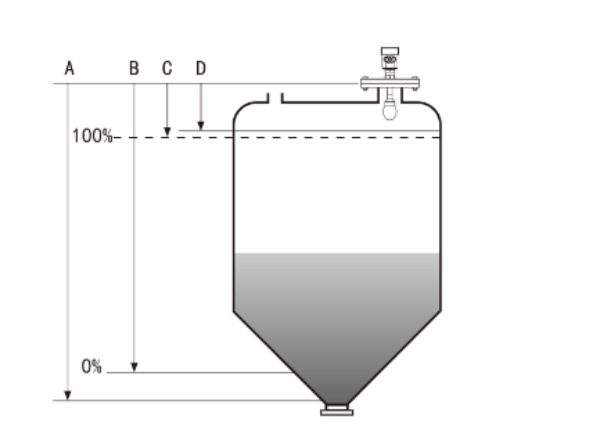
A: range setting, B: low level adjustment, C: high level adjustment, D: blind range
The reference surface for measurement is: the bottom surface of the thread or the sealing surface of the flange.
Note: When using the radar level meter, make sure that the highest material level cannot enter the measurement blind zone (the area shown in D in the figure)
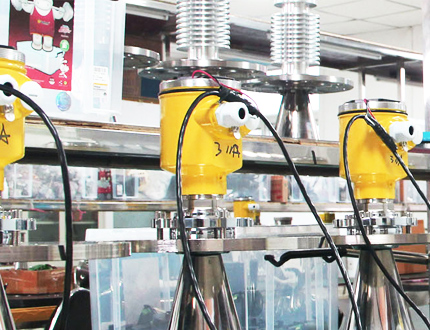 ● Small antenna size for easy installation; non-contact radar, no wear and tear, no contamination.
● Small antenna size for easy installation; non-contact radar, no wear and tear, no contamination.
● Virtually unaffected by corrosion, foam; virtually unaffected by water vapor, temperature and pressure changes in the atmosphere.
● Severe dusty environment has little effect on the work of high frequency level meter.
● Shorter wavelength, better reflection on inclined solid surfaces.
● Smaller beam angle and concentrated energy, which enhances the return capability and helps to avoid interfering objects at the same time.
● Smaller measurement blind spot, and good results for small tank measurements.
● High signal-to-noise ratio for better performance even under fluctuating conditions.
● High frequency, a better choice for measuring solids and low dielectric constant media.
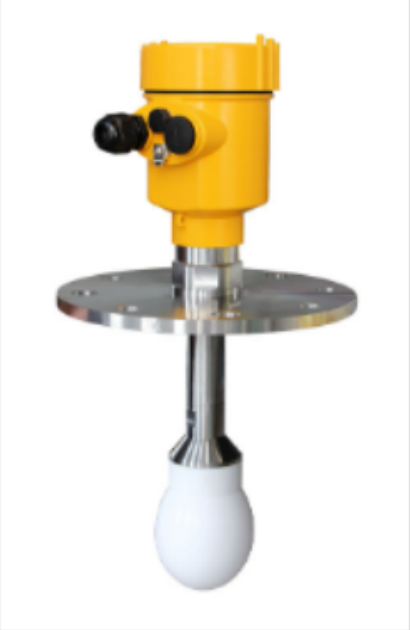 Applications: corrosive liquids, vapors, volatile liquids
Applications: corrosive liquids, vapors, volatile liquids
Measuring range: 15 meters
Process connection: Flange
Process temperature:-40~130℃( standard type ) / -40~250℃( high temperature type )
Process pressure: -0.1~2.0MPa
Accuracy:±3mm
Protection level: IP67
Frequency range: 26GHz
Power supply: two-wire system (DC24V) / four-wire system (DC24V/AC220V )
Explosion-proof grade: Exia ⅡC T6 Ga / Exd IIC T6 Gb
Housing: Aluminum single cavity / Aluminum double cavity / Plastic / Stainless steel single cavity
Signal output: 4.... .20mA HART ( two wire / four wire ) RS485 Mod bus

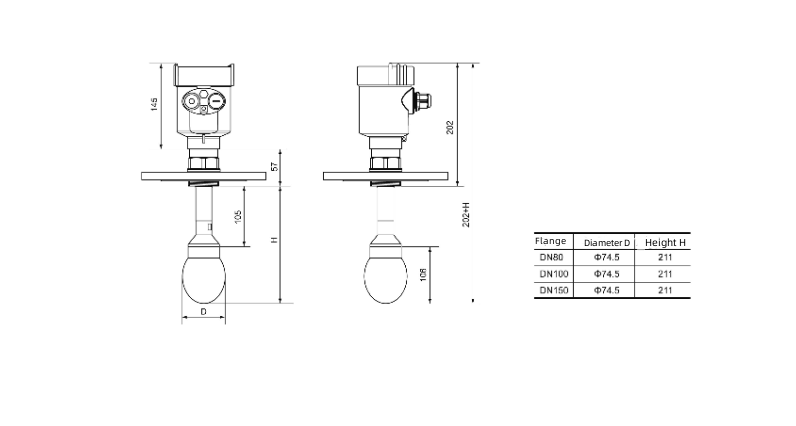
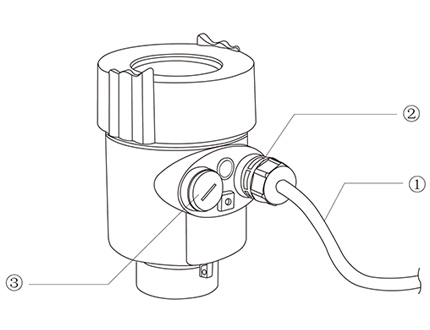 This instrument fully meets the requirements of protection class IP66/67.
This instrument fully meets the requirements of protection class IP66/67.
Please make sure that the cable sealing head is waterproof. As shown
How to ensure that the installation meets the requirements of IP67.
Please make sure that the sealing head is not damaged.
Please make sure that the cable is not damaged.
Please ensure that the cable used meets the requirements
of the electrical connection specification.
Before entering the electrical connection, bend the cable downwards to
ensure that water does not flow into the housing, see ①
Please tighten the cable sealing head, see ②
Please plug the unused electrical connections with blind plugs, see ③
Process connection Thread G1½"A / Thread 1½"NPT / Flange
Antenna profile Stainless steel / PTFE
Housing Seal between housing and housing cover Silicone rubber
Housing sight glass Polycarbonate
Grounding terminal Stainless steel
Supply voltage Two-wire standard (16 to 26) V DC
Intrinsically safe (21. 6 to 26. 4) V DC
Power consumption max 22. 5mA / 1W
Allowable ripple
Explosion-proof type - <100Hz Uss < lV
- (100 to 100K) Hz Uss < l0mV
(22. 8 to 26. 4) V DC Two-wire system
(198 to 242) V AC four-wire / 110V AC four-wire
Cable parameters Cable inlet/plug 1 M20xl.5 cable inlet
1 blind plug M20xl.5
Terminal Wire cross section 2.5 mm²
Output parameters Output signal (4 to 2 0) mA
Communication protocol HART
Resolution 1. 6 μA
Fault signal Current output constant
20. 5mA
22mA;
3.9mA
Integration time (0 to 36)s, adjustable
Blind area End of antenna
Maximum measuring distance HBRD901 10m (liquid type)
KD902 30m (liquid type)
KD902T 20m (liquid type)
KD903 70m (solid type)
KD904 80m (solid type)
KD905 30m (Solid type)
KD906 20m (Liquid type)
Microwave Frequency 26GHz
Communication interface HART communication protocol
Measurement interval Approx. 1 second (depending on parameter settings)
Adjustment time approx. 1 second (depending on parameter setting)
Display resolution 1mm
Operating storage and transport temperature (-40 to 100) °C
Process temperature (temperature of the antenna section) HBRD901 (-40 to 130) °C
KD902 (-40~250)℃
KD902T (-40~250)℃
KD903 (-40~250)℃
KD904 (-40~250)℃
KD905 (-40~250)℃
KD906 (-40~200)℃
Relative humidity ˂95%
Pressure Max. 4MPa
Shock resistance Mechanical vibration l0m/s² , (10~150)Hz
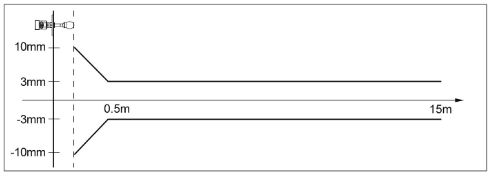
● Installation Notes
There should be no obstacle between the lower edge of the antenna and the surface of the measured medium, and the installation should avoid the facilities inside the tank as far as possible, such as.
Human ladder, limit switch, heating equipment, bracket, etc. In addition, the microwave beam should not intersect with the material flow.
Installation should also pay attention to the highest material or liquid level should not enter the measurement blind zone: the instrument must be kept a certain distance from the tank wall
The instrument must be installed so that the emission direction of the antenna is perpendicular to the surface of the measured medium as far as possible.
Instruments installed in explosion-proof areas must comply with the national installation regulations for explosion-proof hazardous areas. Explosion-proof instruments can be installed in
The instrument must be connected to earth. The housing of the explosion-proof instrument is made of cast aluminum.
● Installation location
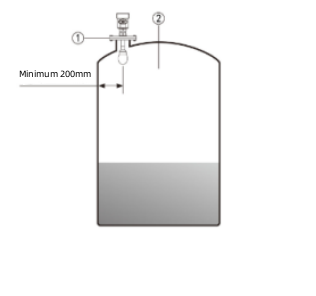 The gauge is installed at 1/4 or 1/6 of the tank diameter.
The gauge is installed at 1/4 or 1/6 of the tank diameter.
Note: The minimum distance from the tank wall should be 200mm.
Note: ① datum ② central or symmetry axis of the vessel
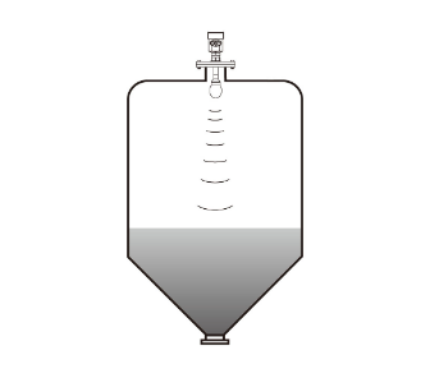 The top of the conical tank is flat, and the membership is
The top of the conical tank is flat, and the membership is
mounted right in the middle of the tank top.
The measurement can be guaranteed to
the bottom of the cone.
●Container receiver requirements
The installation of the accumulator has certain requirements for the length of the container receiver.
In order to ensure that the antenna part of the reach into the tank, the height of the receiver
Less than 100 mm.
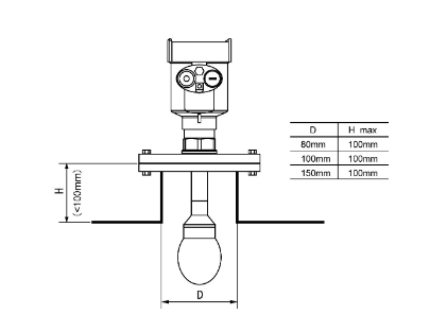
● Typical incorrect installation.
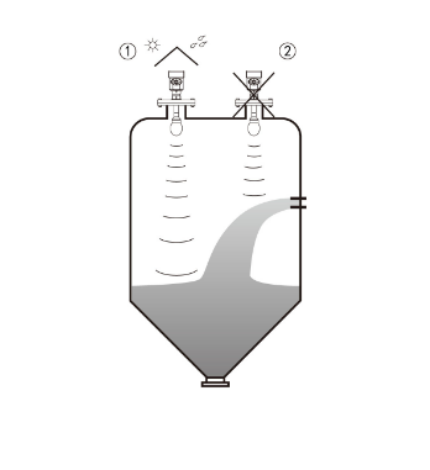 Conical tanks.
Conical tanks.
Can not be installed above the inlet.
Outdoor installation should take sun and rain protection measures.
①Correct
② Wrong
The instrument should not be installed in the middle of an arch or round tank roof. In addition to the indirect echoes, it will be affected by multiple echoes.The multiple echoes can be larger than the true echoes. Multiple echoes can be larger than the signal gaps of true echoes, because multiple echoes can be concentrated through the top. ThereforeIt should not be installed in the center.

①Correct ②Error
When there is an obstacle in the tank that affects the measurement, it is necessary to install a reflector plate to measure properly
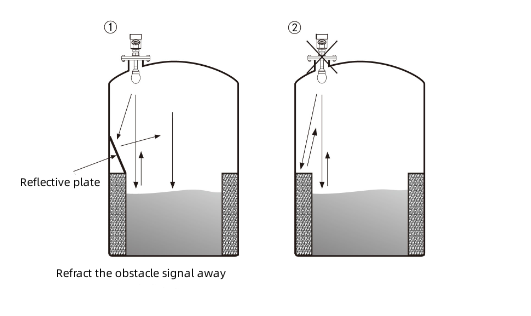
①Correct ②Error
ELECTRICAL CONNECTIONS
● Supply voltage
The (4 to 20) mAHART (2-wire) power supply and output current signal share a common two-wire shielded cable. See technical data for specific supply voltage ranges. For intrinsically safe models a safety barrier must be added between the power supply and the instrument.
(4 to 20) mAHART (4-wire) supply The power supply and the current signal are separated by a separate two-core shielded cable. See technical data for specific supply voltage ranges.
Modbus-RS485 The power supply and the Modbus signal lines are separated by a two-core shielded cable. See technical data for supply voltage range.
● Installation of connection cables
General Introduction :The supply cable can be a normal two-core cable with an external diameter of 6 to 12 mm. to ensure that the cable entry is sealed. If electromagnetic interference is present, it is recommended to use shielded cable.
(4~20) mAHART (2-wire):Ordinary two-core cables can be used for the power supply.
(4~20) mAHART (4-wire):The electricity supply should now use a cable with a special ground.
Modbus-RS485:Shielded cable wires should be used for the power supply cables.
Cable shielding and wiring:The shield cable should be earthed at both ends. Inside the sensor, the shield must be connected to Internal earth terminal. The external earth terminal on the housing must be connected to earth.
If there is an earth current, the shield on the side of the shield cable away from the instrument must be connected to earth via a ceramic capacitor (e.g. 1nF/1500V). must be grounded via a ceramic capacitor (e.g. 1nF/1500V) in order to This serves to isolate and bypass high frequency interference signals.
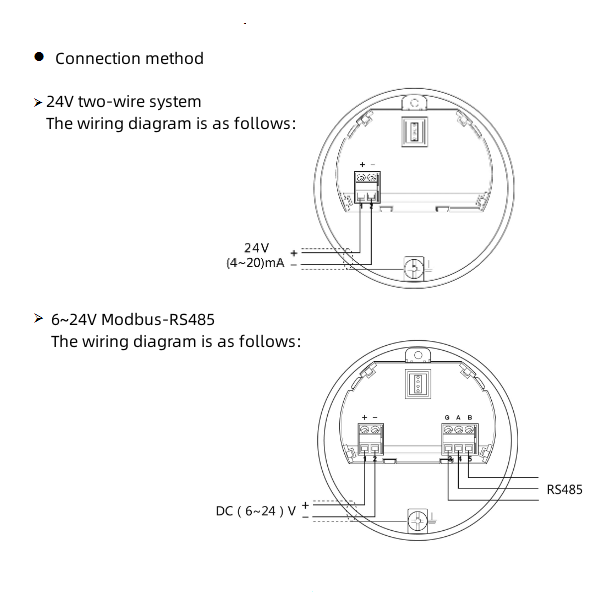
● Explosion-proof connections
The explosion-proof form of this product is intrinsically safe. The intrinsically safe pulse radar level meter is made of die-cast aluminium housing material and the electronic components are sealed with rubber, thus ensuring that sparks generated in the event of a circuit failure do not escape. This ensures that no sparks are emitted in the event of a partial circuit failure. This product is suitable for continuous level measurement in flammable media up to Exia IIC T6 Ga.
The FBS-2 safety barrier is an integral part of this product and is intrinsically safe. The FBS-2 is an integral part of this product. Explosion-proof marking: [Exia] IIC, supply voltage (21.6~26.4) V DC, short-circuit current 135 mA, operating current (4~20) mA. (4~20) mA.
All cables must be shielded flexible cable, maximum length from the instrument to the safety grid 500 m. Distribution capacitance ≤ 0.1u . F/km, distributed inductance ≤ 1mH/km. Do not use other associated equipment that has not been tested for explosion protection. The instrument must not be connected to earth.
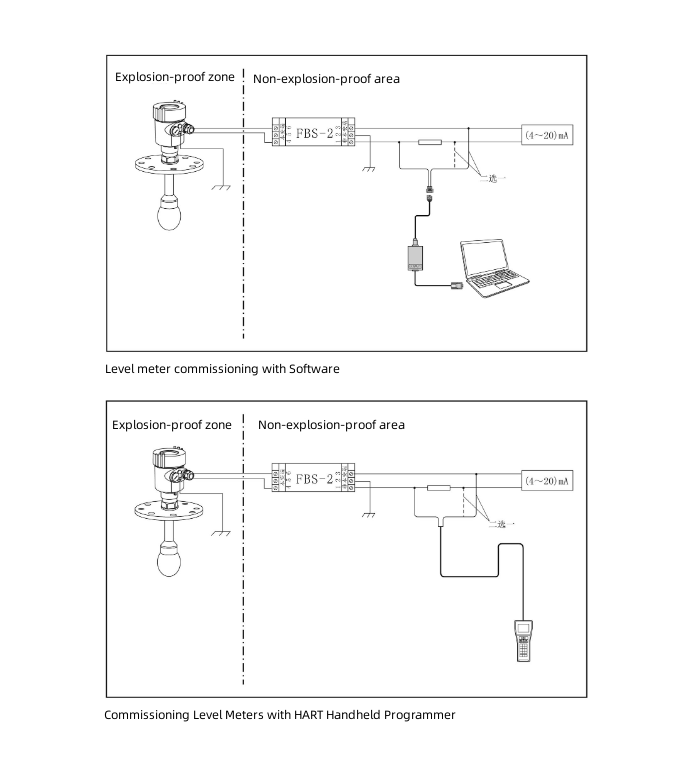
We are here to help you! If you close the chatbox, you will automatically receive a response from us via email. Please be sure to leave your contact details so that we can better assist